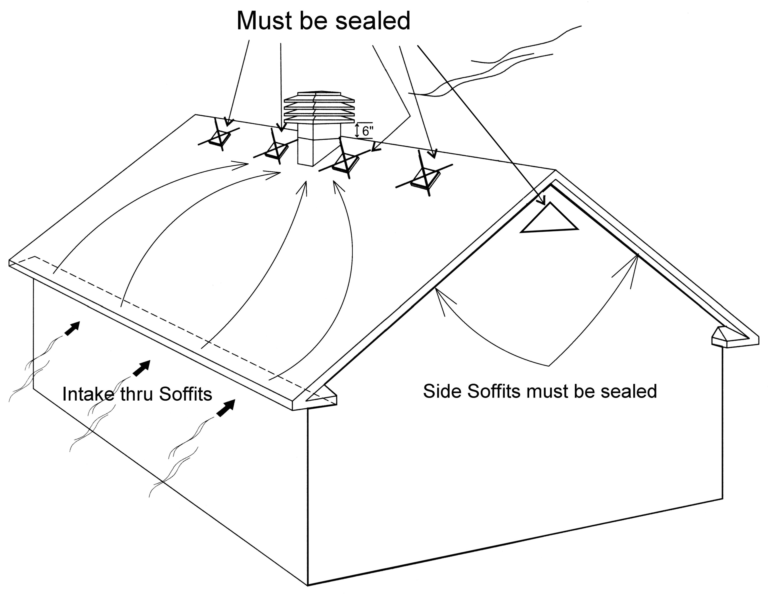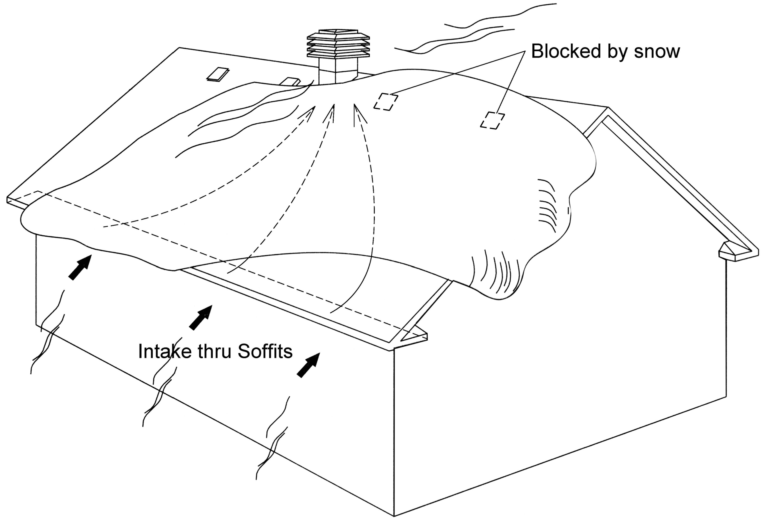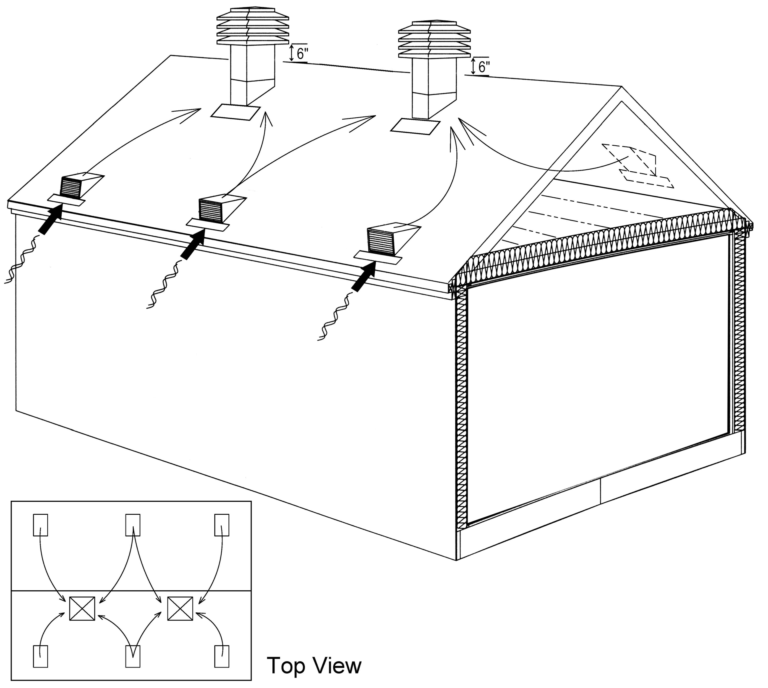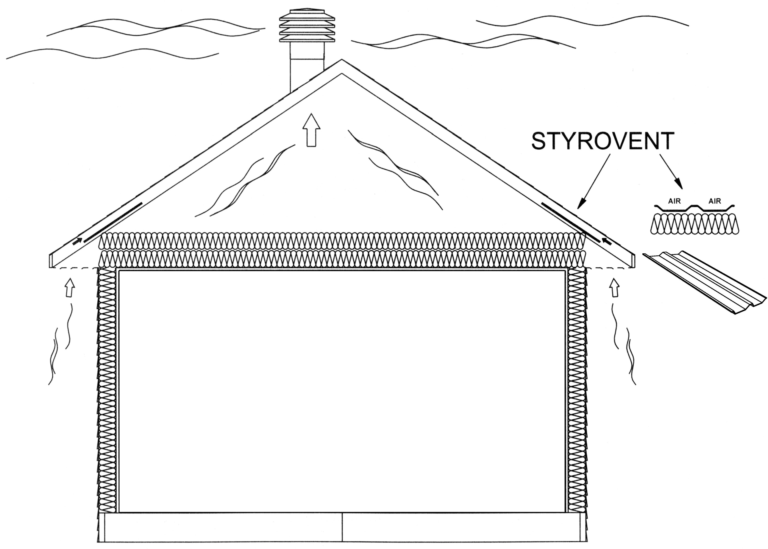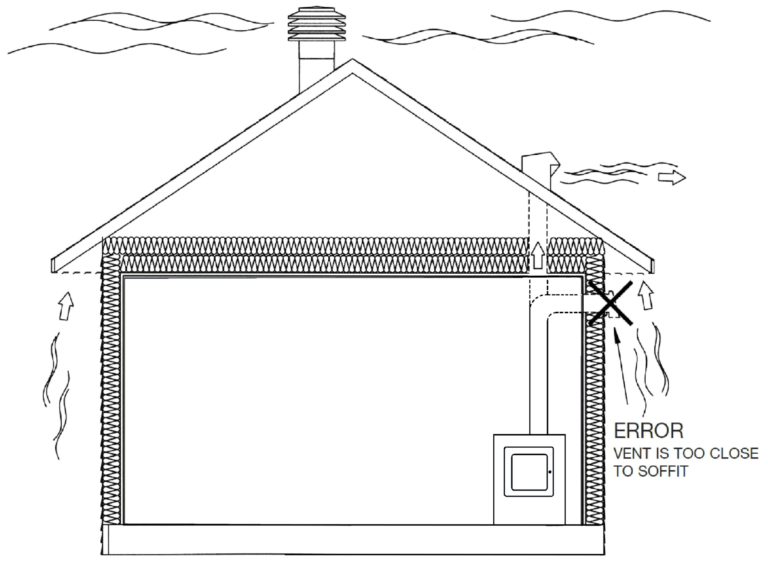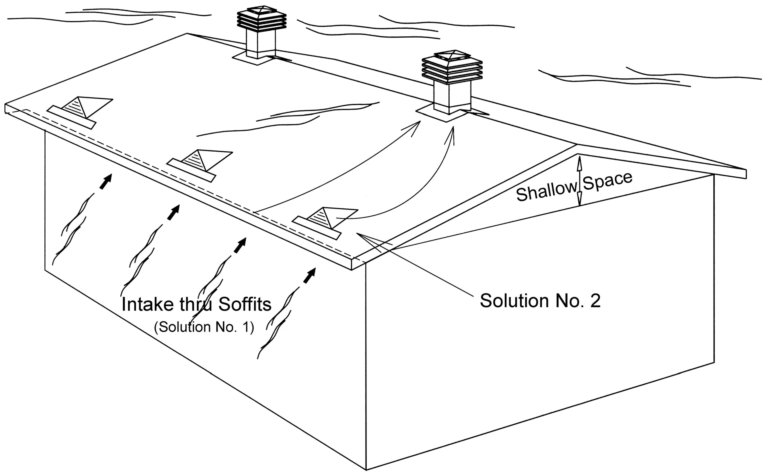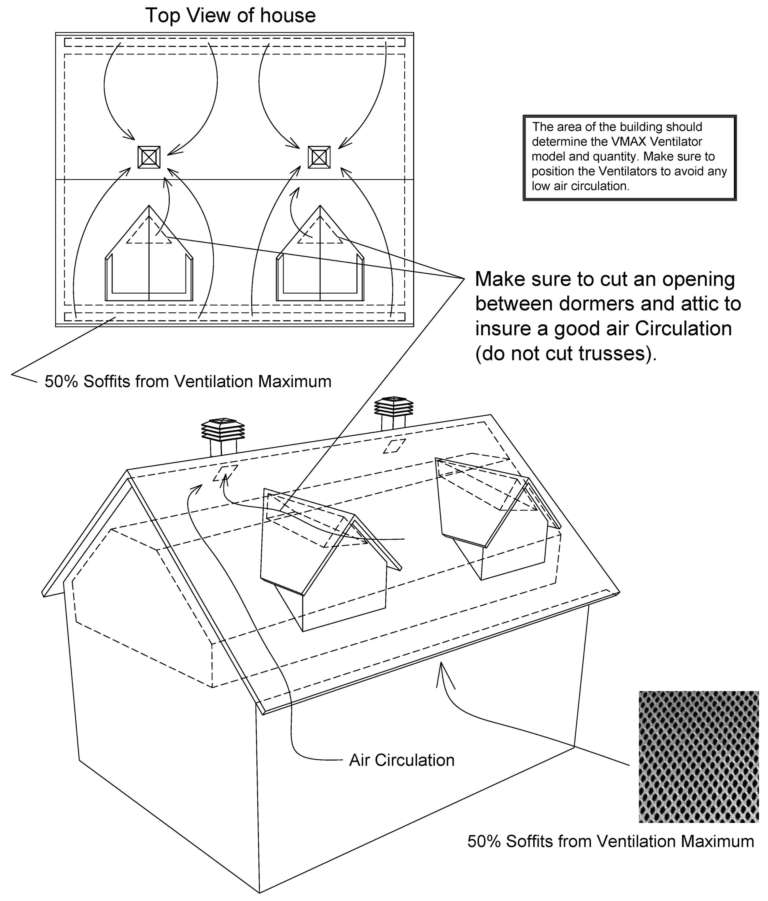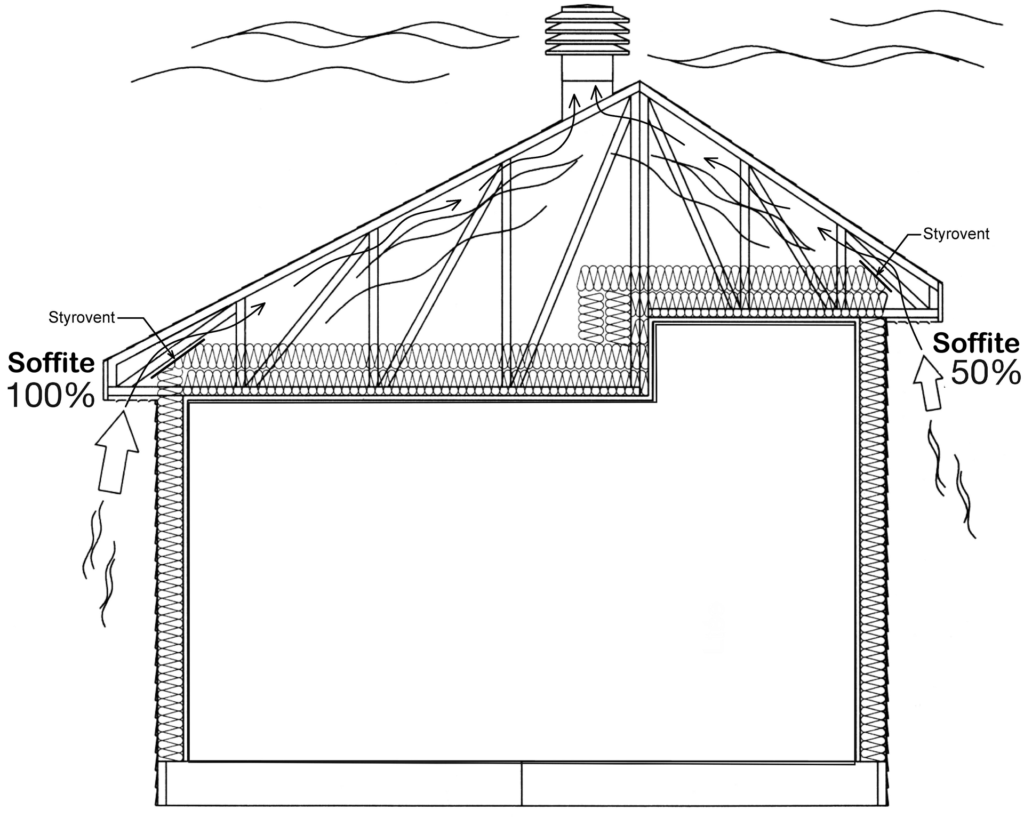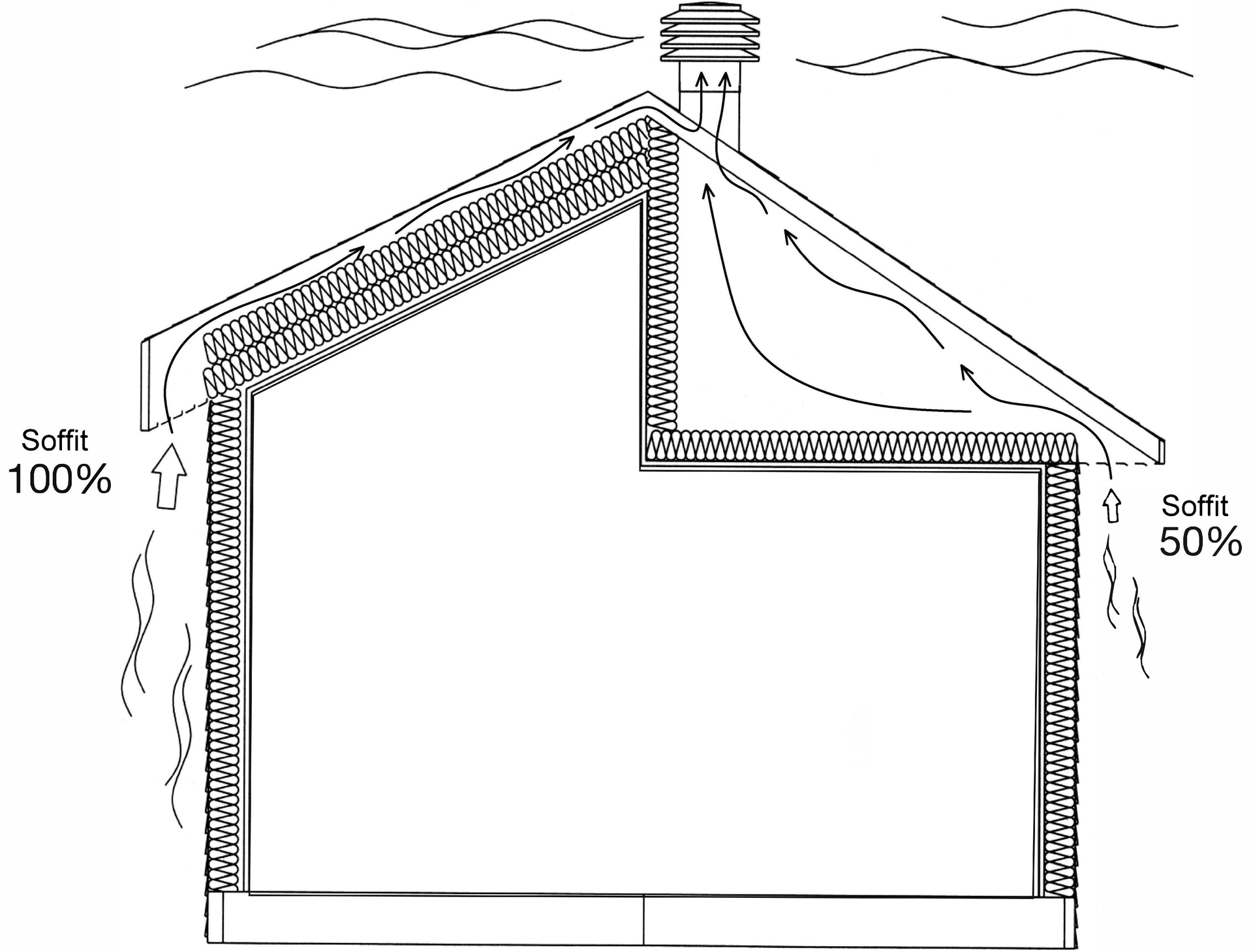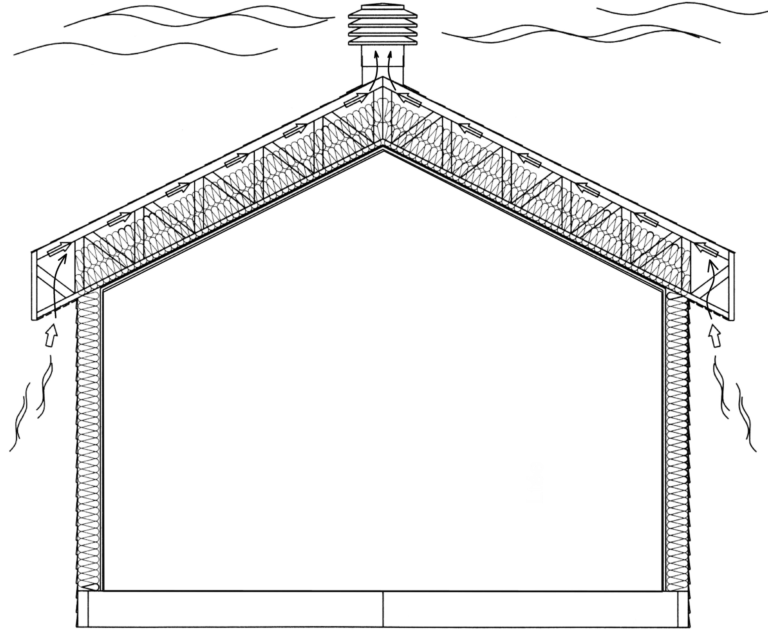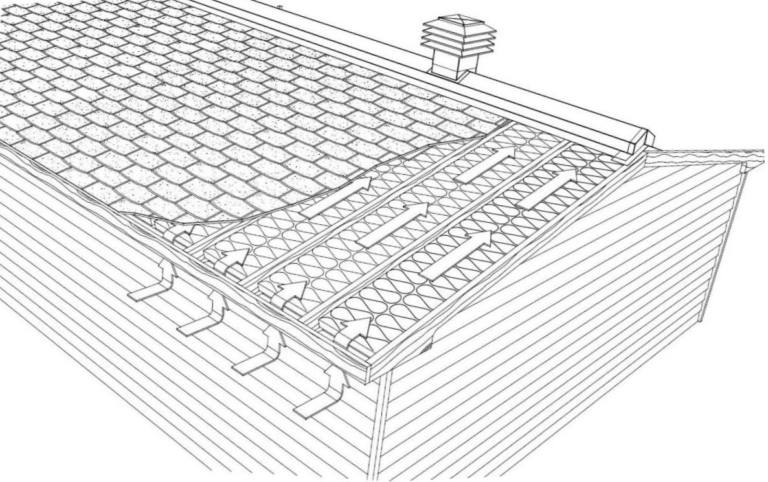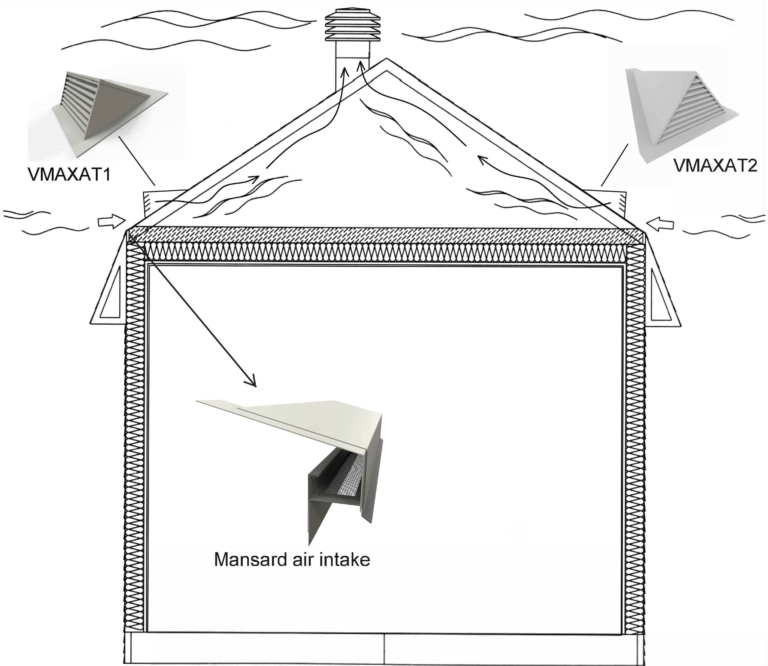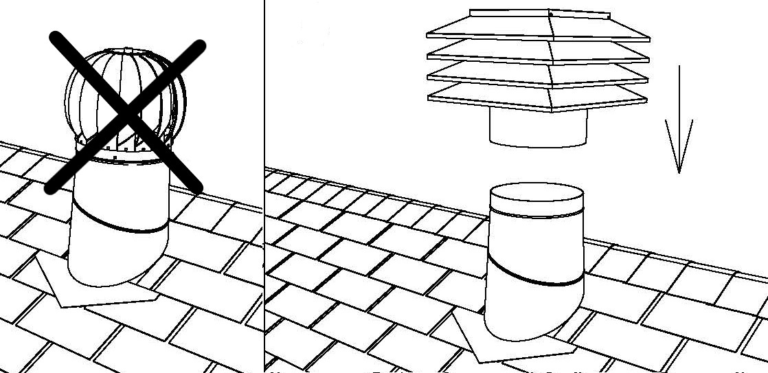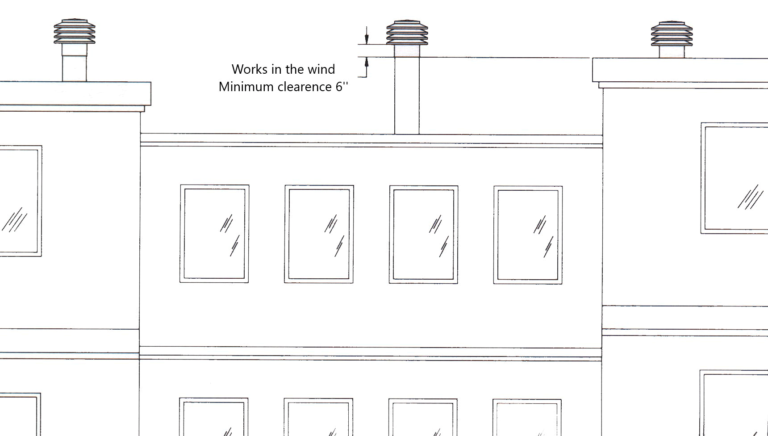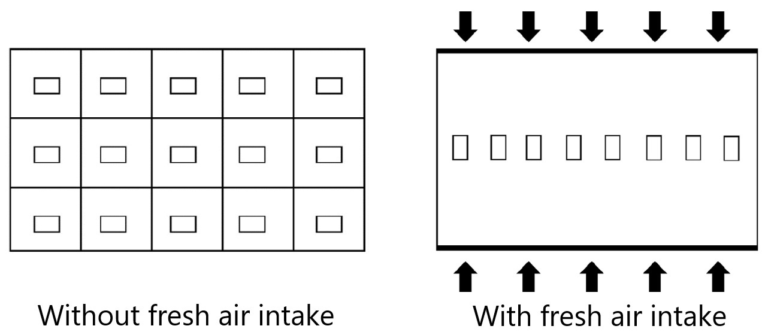Guide to Attic Ventilation
Verify Before Ventilating the Attic Space
Verify Before Ventilating the Attic Space
- If the vapor barrier has been built into the home or building. Should there be any holes allowing moisture to escape, seal it shut.
- If the attic insulation is sufficient and conforms to local standards.
- If the soffit vents are vented, communicate with the attic space and are unobstructed.
- If there are any HVAC ducts located in the attic space; if so, they should be insulated and none should be left bare.
- If an attic access door or partial wall has been insulated according to local standards.

Steps for Installing a New Ventilator
- Choose a ventilator that is adequate; avoid seemingly comparable substitutes that have not been tested nor approved by a reputable firm for their air drawing and exhausting capacity, durability and safety features. For help with this step, visit our online calculator.
- Install the ventilator that is adequate for the specific location, the head being exposed to all directions of wind and the louvres rising above the peak of the building by 6 inches. The hole of the vent should be unobstructed and located between two rafters.
- The base of the ventilator should be well weatherproofed using roofing cement sealant as per manufacturer installation requirements.
- Make sure that the soffit vents are open and that insulation is not obstructing the openings.
- Make sure that all other types of roof vents (such as ridge vents or turbine vents), other than the Maximum ventilators and the soffits, are condemned and well sealed. The goal is to create good air circulation from the intake source to the peak where the Maximum ventilator is located, ensuring efficient attic ventilation.
- Avoid installing a vent near a parapet, wall, or a device that is higher than the ventilator.
Roof Equipped With Other Attic Ventilation Products
Roof Equipped With Openings Other Than Soffits or Roof Vents
Roof Equipped with Shingle Roof Ventilators
Sloped Roofs with Blocked Soffits
Sloped Roof Soffits Blocked by Walls
Sloped Roof Soffits Blocked by Insulation
Roof With Warm Air Vent in the Attic or Near a Soffit
Sloped Roofs With Limited Attic Height
Sloped Roofs With Limited Attic Height
Roof With Dormers
Roof With Dormers
Roof With Asymmetric Slopes
Roof With Asymmetric Slopes
The soffit on the side of the shortest slope be 50% blocked, leaving the soffit of the opposite slope completely open. This balances the chimney effect and makes ventilation more efficient due to the joint action of the soffits and the Maximum ventilator. Drawn air enters and circulates evenly; the ventilator then uniformly exhausts excess humidity and heat from both sides of the roof.
Cathedral Roofs
Gable Roof Having One Cathedral Ceiling
Since the side with the cathedral ceiling is more difficult to ventilate, leave the soffit 100% open on this side and install Maximum ventilators on the non-cathedral side in order to pull the flow of air to its direction. Partially obstructing the soffit on the non-cathedral side produces a balanced attic ventilation. This type of building requires installing a Maximum ventilator for every 600 square feet of insulated ceiling.
This type of building requires installing a Maximum ventilator for every 600 square feet of insulated ceiling.
Cathedral Roof With Trusses
The Solution to Cathedral Roof Problems
Mansard Roof Lacking Adequate Aeration
Mansard Roof Lacking Adequate Aeration
Conventional Roof with Turbine Vent Problems
Conventional Roof with Turbine Vent Problems
Is your turbine vent causing problems? It’s noisy, stop operating in freezing rain, and lets in water and snow! Here’s the solution: Ventilation Maximum manufactures replacement heads to exchange those noisy and defective turbine vents.
A very simple installation is required:
- Remove the screws from the existing turbine
- Remove the old turbine vent and
- Install the VMAX-401 by securing it over the existing hole. Our adapters make it easy to install.
Most old turbines can be replaced whether it is 10, 12 or 14 inches in diameter, leaving in its place a ventilator that is quiet, efficient, reliable and safe.
Flat Roof Ventilation
Multi-Level Flat Roofs
Positioning of Ventilators on Flat Roofs with or without Soffit Air Intake
The location of the ventilators on a flat roof is of the outmost importance. Positioning of ventilators on flat roofs with or without soffit air intake: Divide the roof area by the number of ventilators required according to manufacturer’s standards and install Maximum ventilators at the center of each of these divisions.
A ventilator should never be installed any closer than 6 feet from a wall or unit which is as high as the ventilator itself.
The opening within the wooden curb will determine the Net Free Area (NFA) for model VMAX-101, 201 and 102.
It is important to measure the free air space between the underside of the roof deck and the insulation to determine the right model of ventilator. It is also important when ordering these ventilators that the size of the wooden curb (exterior), as well as the thickness of the roof membrane being applied on the wooden curb be considered to ensure the right dimension of the ventilator.


